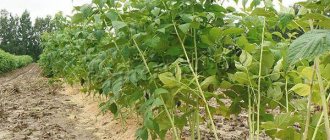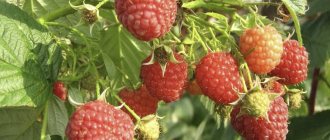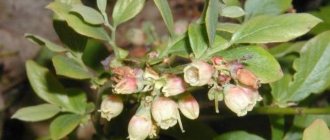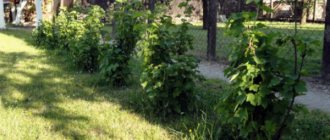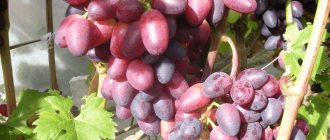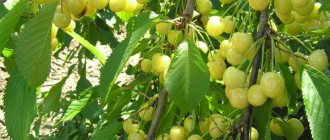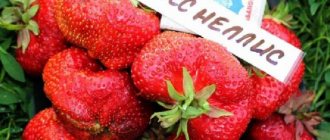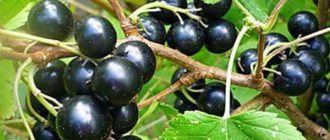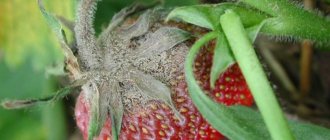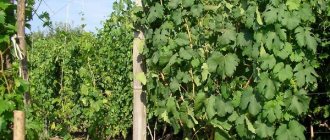Advantages and disadvantages
- Among the advantages of this variety, the following characteristics are noted:
- high productivity;
- frost resistance;
- large berries;
- unpretentiousness in cultivation and care.
- Among the disadvantages of the variety are the following:
- Canadian raspberries are not always well received on the site, so it is recommended to follow the rules of agricultural practices for these trees.
- With a lack of moisture, the berries become smaller and the yield decreases.
- If the area is not sunny enough, the berries will be less sweet.
Drought resistance, frost resistance
Standard raspberries have shallow roots. But since there are many of them, raspberries can survive drought. However, the berries are more than 80% water and if there is a lack of it, they will be small. During prolonged drought, when the ovaries form, the tree may shed some of them.
Did you know? It is believed that although raspberries were eaten by prehistoric people, they began to be cultivated only in the 1600s. in France and England.
Canadian raspberries are very easy to grow. It grows well in a wide range of climates (zones 3–9), withstands frosts down to -26°C and is well adapted to them.
Do not forget that raspberries are a plant that prefers brightly lit areas, well-drained soil and good watering. These are the conditions under which you will get maximum yield.
Productivity and fruiting
Standard varieties bear fruit twice a year. The first wave of fruiting occurs at the end of June. At this time, the berries on the shoots of the second year of growth ripen. The second wave begins in late August or early September. At this time, shoots of the first year of development bear fruit.
The total volume of berries that can be collected from one tree is 7–12 kg. It depends on how fertile the soil is and how much water the raspberries received during fruit development. The mass of berries is not stable and also depends on moisture. The average weight of the berry is 7 g, the maximum is 9 g.
Did you know? To stimulate fruiting, you need to carry out high-quality pruning, and then you will get a more significant harvest and larger berries. Unpruned trees may be delayed in bearing fruit by 1
–
2 weeks.
Video: Purple Raspberry Glen Coe
Differences from red raspberries and blackberries
Based on the description of the crop, the Glen Coy variety differs from red raspberries and blackberries in the following characteristics:
- absence of thorns;
- unusual shade of fruit;
- pleasant taste, without acid notes.
Did you know? Glen Coe raspberries contain a large amount of vitamins and minerals. Low calorie content (only 40 kcal per 100 g) allows you to use it during a diet or treatment of gastrointestinal diseases.
Appearance, characteristics of berries, fruiting time, yield
Bushes of the Glen Coe variety grow up to 2 m. Despite the compactness of the plant, the crown is spreading. Therefore, it is necessary to tie up the shoots so that they do not break under the influence of large berries. The leaves are characterized by a trifoliate shape, large size and rich green color.
With the onset of summer, flower buds form on the surface of the bushes. Replaced shoots form quickly, so reproduction worsens. Despite the low popularity of the plant in Russia, large berries of violet or purple color, with a pink tint, do not leave anyone indifferent.
The main characteristics of the fruit include:
- Conical shape.
- Berry weight - 7 g.
- The berry size is up to 2 cm.
- Presence of glossy shine.
The pulp of the fruit is juicy and soft. There are a small number of small seeds that are easily separated from the pulp. The taste is pleasant, sweet. No acid is observed. The products are suitable for fresh consumption or cooking (desserts, jams or compotes).
Did you know? A distinctive feature of the Glen Coe variety is the dry separation of the berries. When overripe, the fruits do not fall off and do not lose their taste.
The yield indicators of the Glen Coe variety are high. Each bunch produces up to 10 berries. From 1 bush you can collect up to 6 kg of products. Fruiting occurs in the 2nd year after planting the variety. The bushes begin to bear fruit in early July. Since the variety is a mid-season species, it continues until the first drop in air temperature.
Advantages and disadvantages of the variety
- The common advantages of this variety include:
- there are no thorns on the shoots;
- high yield characteristics;
- rapid growth of bushes;
- versatility of use;
- possibility of long-term storage and transportation;
- resistance to drought and frost;
- flexible annual shoots;
- resistance to diseases.
- Among the disadvantages are the following features:
- the need to garter bushes;
- demand for fertilizing.
Planting and caring for Japanese raspberries
Growing and caring for Japanese raspberries is usually not difficult - the shrub is considered one of the easiest to grow in a summer cottage. However, to get good yields from the plant, you need to know the basic rules of growing.
Selection and preparation of a landing site
Japanese raspberries have standard requirements for soil and light levels for berry bushes. It is best to plant the plant on slightly acidic or neutral fertile soil. The area should be well lit by the sun and protected from strong winds; it is also desirable that in the winter months a large amount of snow accumulates at the site where the raspberries are planted; it will serve as a natural insulation for the bush.
Japanese raspberry seedlings can be planted both in spring and autumn. About a month before planting, you need to prepare the soil - carefully dig up the area, remove the remains of other crops and weed out all the weeds. The soil is loosened and complex fertilizers are applied; the soil can also be mixed with rotted manure.
Attention! It is not recommended to plant Japanese raspberries in areas where strawberries, tomatoes or potatoes used to grow. The listed crops are affected by the same diseases as purple-fruited raspberries, so the risk of infection of the bush increases
Landing rules
Planting raspberries in a prepared area is carried out according to the following algorithm:
- a hole is dug for the seedling, which should be approximately twice the size of its root system;
- if fertilizers were added to the soil when preparing the site, then the raspberries are planted immediately; if not, then organic fertilizer mixed with soil is first added to the hole;
- the seedling is carefully lowered into the hole and its roots are straightened, pointing them down;
- The young bush is covered with soil to ground level and the soil is compacted properly, making sure that the root collar is flush with the soil surface.
After planting, the seedling must be properly watered and the ground around the trunk mulched with peat, chopped straw or sawdust.
Watering and fertilizing
Japanese raspberries have moderate requirements for humidity levels. If there is no prolonged drought in the region, then it is not necessary to additionally water the shrub; it will make do with natural precipitation. During dry periods, raspberries can be moistened as the soil dries out, but you should not get too carried away - the plant does not respond well to waterlogging.
As for fertilizers, Japanese raspberries are fed once a year in the spring. About 30 g of urea, which promotes active growth of the plant, 50 g of superphosphate diluted with water, and about 30 g of potassium are added under the bush.
Trimming
The description of the Japanese raspberry variety emphasizes that the shrub is prone to very rapid and active growth. Therefore, it is necessary to prune the plant every year without fail.
Typically, pruning is carried out immediately after harvest. During it, all two-year-old shoots are removed, as well as diseased, broken and weakened branches. Shoots that thicken the bush also need to be cut off; they interfere with the healthy growth of raspberries and take away nutrients from the bush.
To improve fruiting, it is recommended to annually shorten annual shoots by about 20-30 cm. This stimulates the development of lateral shoots, on which buds are formed for the next fruiting, and the yield doubles. In addition, short raspberry branches are easier to care for and the berries are easier to pick from them.
Preparing for winter
Japanese raspberries have high frost resistance and can easily tolerate cold temperatures down to – 30 °C. Therefore, it is only necessary to insulate shrubs in northern regions with extremely low winter temperatures. In other cases, natural snow cover will provide sufficient shelter.
For additional insulation of raspberries, the branches of the bush are tied in bunches, bent to the ground and fixed, and then covered with spruce branches or special material. If the winter is expected to be snowy, then the bush can simply be covered with snow - this will protect the shoots and roots of the bush from freezing.
Important! Even if some of the Japanese raspberry shoots freeze over the winter, after spring feeding the plant will begin to actively grow and quickly restore the volume of green mass
Shrub care
This plant, judging by the reviews of gardeners, is quite unpretentious and does not require long-term and complex care. It winters well even in extreme cold and does not like excessive watering. Japanese raspberries (purple-fruited) thrive in mountainous areas and forest edges. This variety is suitable for growing in northern latitudes with changeable climates.
And yet, if there is a risk of severe frosts, it is better to cover the raspberry roots for the winter. In winter, last year's shoots dry out, and in the spring new ones begin to grow very quickly.
The root system of Japanese raspberries is very branched. Vertical roots are located at a depth of approximately 1-1.5 m, and horizontal ones can spread up to 3 m from the main trunk of the plant.
The plant begins to grow especially violently 3-4 years after planting. If you believe the reviews of gardeners, Japanese raspberries reproduce rapidly and aggressively, like a weed. If this process is not stopped in time, it can fill the entire area, simultaneously “clogging” all other plantings. Therefore, to prevent the bush from growing randomly throughout the area, it is necessary to take measures to contain it within the territory allocated for it.
To do this, you need to perform a number of actions.
- Plant various plants next to the bush to prevent additional shoots from taking root.
- Dig fences into the ground around the entire perimeter of the raspberry plot. Any boards, wooden and metal panels, slate remains and other dampers are suitable for these purposes. The main thing is that they are intact, without cracks or holes.
- Constantly monitor overgrown shoots and remove them in a timely manner.
In order for Japanese raspberries to please with a high yield, it is necessary to provide support for young shoots - a trellis. To do this, dig two or more pillars into the ground at a distance of 7-10 m from each other and stretch a wire or rope at a height of about 1.5 m from the ground.
After the plant bears fruit, all stems on which there were berries, as well as diseased and weak shoots, are removed at the base level. In early spring, when the snow has melted and the threat of frost has passed, the remaining stems should also be cut back to the first living bud.
Japanese raspberry: variety description, planting and care
Japanese raspberry belongs to the Rosaceae family and has several names. Some people know it as purple-fruited, some call it Japanese blackberry (because of the thorns it has), and some call it wineberry for its spicy taste.
This plant is widespread in Japan and other eastern countries: China and Korea. There it is found not only in gardens, but also growing wild. They started growing it in Russia not so long ago, but it already has its fans.
Classifiers are still arguing about what type this plant should be classified as, because it has characteristics of both raspberries and blackberries. And in some sources there are statements that the genes of this berry also contain traces of cloudberries.
Reviews:
To be honest, I didn’t know that the Japanese purple raspberry bears fruit; it was recommended to me at the landscape design center as an ornamental shrub. I was looking for a plant that grows quickly, has dense foliage and can shade the gazebo well and still look beautiful. I note that Japanese raspberries cope with this task perfectly. In addition, I really liked the taste of the berries, it is much more spicy than ordinary garden raspberries, I began to study the issue and found out that in China the berries of this variety are used as an anti-inflammatory, analgesic and antitoxic agent, and the leaves are used to treat skin diseases.
The bush is certainly interesting, but it needs an eye and an eye. It grows too quickly and if you do not remove the shoots in a timely manner, then your entire area will consist only of these raspberries. And why I say that the bush is interesting is because of the fruits. These raspberries are very dense and easily transported and frozen. First of all, I try to give this variety to my grandchildren as a gift, because... I know that the fruits will not be crushed. And if you freeze, then after freezing you don’t get some kind of telepnu, but exactly the same berries as after picking. I also make wine from wine raspberries, it’s not called that for nothing. The aroma is pleasant and the taste is tart.
Reproduction
These plants can reproduce both vegetatively and by seeds.
Among the vegetative methods, the following should be highlighted:
- Dividing overgrown bushes. For these purposes, it is best to use those plants whose age does not exceed 7 years. They need to be dug up and disassembled into sections, each of which must have a sufficient number of buds and roots. In this case, it is recommended to trim off shoots that are too long. This technique improves the survival rate of plants.
- Reproduction by layering. To do this, regrown shoots are pinned to the ground in the spring and sprinkled with soil. After the roots appear, you can begin planting young clematis.
- Cuttings. For these purposes, cuttings that have not yet lignified are cut from the bushes. Then they are planted in greenhouses for further rooting.
Growing clematis is not a very troublesome and exciting activity. And with proper care, these plants will delight you with annual and abundant flowering.
Delicious beauty
Japanese raspberry is a berry subshrub whose shoots spread along the ground or support.
Their length can reach three meters, which is why Japanese raspberries are sometimes called lianas. The densely leafy, reed-like stems are pubescent with reddish bristles. Raspberry leaves are very expressive - bright green on top and silvery-white on the back. Flowering begins on two-year-old shoots in late spring or the first half of June. Small flowers have a rich range of shades - from pink to purple. The pedicels and sepals are covered with reddish-golden bristles. The dense, brush-shaped inflorescences are very reminiscent of the familiar blackberry.
Japanese raspberries are especially picturesque when the harvest is ripe. In one brush there are simultaneously berries of carmine-scarlet, deep red, cherry and purple colors. The fruits, about one centimeter in diameter, shine beautifully, as if covered with gloss. The berries of this variety of raspberries are denser, their pulp is aromatic and moderately sweet.
The diameter of the berries is approximately 1 cm.
With strange berries they do the same thing as with ordinary raspberries: they are consumed fresh, preserves, jams, jellies, compotes, juices, and pie fillings are prepared. As the owners of the “Japanese miracle” assure, homemade wine made from these berries has a unique taste and aroma.
Similarities with "relatives"
The chemical composition of the fruits of all types of raspberries is approximately the same. They contain:
- organic acids,
- carbohydrates,
- pectin,
- essential oils,
- vitamins.
Both fresh and dried berries, and preparations from them are used:
- to increase appetite and improve bowel function,
- as a hemostatic, expectorant, antiemetic,
- in the treatment of colds, rheumatism, anemia, diarrhea, diabetes.
Dried raspberries are used to improve intestinal function.
Japanese raspberry: description
Japanese raspberries belong to the Rosaceae family.
- Japanese purple raspberry is a subshrub with cane-like stems. Plant height is from 1.5 to 2 meters. Long curly shoots are covered with tiny bristles, similar to lint. Gardeners use their decorative properties to decorate their summer cottage, creating hedges.
- The dark green leaf blades are pinnate, consisting of 3-5 small leaflets, smooth on the outside and slightly pubescent on the reverse side.
- Japanese raspberries bloom with small reddish-pink flowers, collected in inflorescences on spiny stalks. Flowering occurs in May on two-year-old shoots.
- After flowering, the plant forms a fruit - an edible berry - an oblong multi-drupe, up to 1 cm in length. At the beginning of ripening, the berry has a yellowish, then red tint, and when fully ripe it acquires a rich purple or inky color. Berries of different shades can ripen simultaneously in one brush. It looks quite attractive. The first harvest ripens in late summer - early autumn.
- Japanese raspberries have excellent taste. The harvested crop tolerates transportation well.
Reproduction
Almost wild, the purple-fruited Japanese raspberry reproduces by all methods known in botany.
- The most active propagation occurs by root cuttings and shoots. The speed of reproduction is such that it is necessary to expend effort, time and material resources to control the growth of raspberry root shoots.
- Japanese raspberries reproduce well by rooting vegetative green cuttings. The cut tops (3-4 internodes) are placed in damp sand in a schoolhouse or immediately planted in place. This is the only time when growing purple raspberries that they require regular watering. Within 3...4 weeks, green cuttings take root and grow actively. From this point on, the number of waterings is reduced to 1 time every 10 days.
Most often, the problem of propagation of purple raspberries arises when arranging hedges. In this case, thickened planting is used - 4-5 cuttings are planted per 1 linear meter. With this method of planting, already a year after the formative pruning and trimming of the bushes, decorative raspberries with an unusual color of berries will grow along the borders of the site.
Applications of Japanese raspberries
Purple-fruited raspberries are distinguished by good preservation of berries - dense fruits tolerate transportation well and retain their shape. Therefore, raspberries are not only eaten fresh, but also actively used for preservation, made into wine, added to fillings for pies and cakes, consumed with ice cream and as part of cocktails.
Japanese raspberries contain many important vitamins and organic acids. Therefore, they are also used in folk medicine, to treat colds and inflammatory ailments, and to eliminate digestive problems. For example, hot tea with Japanese raspberries is an excellent antiviral agent and quickly reduces fever, and a homemade tincture of the plant’s fruits is suitable for treating the gastrointestinal tract and blood vessels.
Fresh Japanese raspberries can be used for cosmetic purposes. When added to face masks, berry pulp has a moisturizing and rejuvenating effect, nourishes and softens the skin. Japanese raspberries contain small seeds, so they are well suited for making gentle homemade scrubs.
Advice! You can plant Japanese raspberries on your property not only for harvesting purposes, but also for decorative purposes - a shrub with beautiful dark emerald foliage can serve as a hedge.
Purple raspberry
Purple raspberry (lat. Rubus phoenicolasius) is a beautiful perennial vine from the Rosaceae family. Other names are wine or Japanese raspberries.
Description
Purple raspberry is a long climbing perennial vine, endowed with reed-like stems that can lengthen by one to three meters per year. The pinnate leaves of this culture are formed by three to five separate leaves, and the flowers, collected in bizarre inflorescences, sit on very spiny stalks. Flowers can form only on shoots that have reached two years of age, and they usually bloom towards the end of spring.
The diameter of the flowers ranges from six to ten millimeters. Each flower is equipped with a prickly calyx and five pinkish or red petals.
The fruits of this variety of raspberries are rather elongated edible polydrupes, reaching one centimeter in length, very sweet and surprisingly aromatic. Unripe berries are usually red, and fully ripe fruits acquire a characteristic dark purple, and sometimes even black color. At the same time, in one brush you can often see both green and finally ripe berries. As a rule, fruit ripening occurs in the second half of summer and early autumn.
Where does it grow
The birthplace of purple raspberries is considered to be Korea, as well as China and Japan. And now it is actively cultivated as an ornamental perennial in a number of North American and European countries.
Application
The berries of such raspberries are eaten fresh, and they are also used to make jellies and jams, often make compotes and preserves, and even infuse wine. And they also make excellent pie fillings.
These fruits contain a lot of vitamins, valuable mineral elements and biologically active substances. In general, their chemical composition is almost similar to ordinary raspberries.
Purple raspberry boasts an excellent antipyretic and powerful diaphoretic effect, as well as the ability to relieve swelling of the bladder and even induce labor. In addition, it has diuretic and choleretic, hemostatic, anti-inflammatory, antitoxic, appetite enhancing and antiemetic, as well as a powerful analgesic effect. It is noteworthy that all the beneficial properties of these bright fruits are not lost even as a result of thermal exposure.
An infusion from the roots of the plant is an excellent remedy for diarrhea, and the systematic use of these aromatic berries is an excellent prevention of leukemia and no less dangerous anemia. The leaves are also used - they are crushed and applied to areas of the skin attacked by lichen, as well as psoriasis, inflamed acne, etc.
Contraindications
The contraindications for these berries are exactly the same as for regular raspberries.
Pros and cons of Japanese raspberries
The culture in our country is new: opinions about Japanese purple raspberries are very ambiguous - the plant has both obvious advantages and disadvantages.
Advantages of the variety:
unpretentiousness to growing conditions; Japanese raspberries do not suffer from traditional fungal diseases of cultivated berry plants; good adaptation properties to new climatic conditions; high winter hardiness, suitable for cultivation in most parts of Russia; rapid growth of the bush, which is important for organizing decorative plantings and hedges; easily tolerates cutting - suitable for garden design.
Disadvantages of the variety:
- aggressive behavior - the crop reproduces unusually quickly by root shoots, restrictive measures have to be taken.
- To form fruit-bearing plantings, the plant requires the organization of a trellis.
- The yield of Japanese raspberries is inferior to traditional varieties of cultivated raspberries and even forest raspberries.
The list of positive and negative qualities is a very conditional criterion. The rapid growth of branches and accelerated propagation of the crop becomes an important advantage if we consider Japanese raspberries as an ornamental garden plant.
Japanese raspberries in garden decor and on the table
Japanese raspberries are known to most gardeners as purple raspberries, or Rubus phoenicolasius. The plant belongs to the perennial climbing vines of the Rosaceae family. The homeland of raspberries is Northern China, Korea and Japan. In recent years, this variety has been actively cultivated in European countries and North America.
Botanical description
The stems are reed-like and can grow up to two meters in a year. The leaves are pinnate, compound, with three to five leaflets. Inflorescences, consisting of several flowers on spiny pedicels, develop on two-year-old shoots. Flowering occurs in late spring. The average flower diameter is 8 mm, the petals are red or pink. The pedicels are short, with golden-red bristles.
The berries are edible polydrupes of an oblong shape, with an average length of 10 mm. As they ripen, they acquire a red color, and when fully ripened, which occurs in the summer or the first ten days of autumn, they become dark purple, almost black.
The taste is quite good. The pulp is aromatic, moderately sweet.
Constant consumption of this variety of raspberries is useful for the prevention of anemia and leukemia. The valuable properties of the berries are preserved even after heat treatment.
Breeding rules
Japanese raspberries are propagated by seeds or rooted cuttings. The simplest option is propagation by layering or root suckers. In the fall, the cuttings are dug up by the roots and transplanted to a permanent place. The plant takes root well and, subject to propagation technology and proper care, takes root very quickly.
When propagating raspberries by seeds, use the standard scheme for growing seedlings. The seeds are pre-stratified and then sown in autumn or spring.
It should be taken into account that Japanese raspberries are capable of spreading quite aggressively throughout the garden plot and, as a result, suppress the growth and development of other cultivated plants.
Care technology
Japanese raspberries are unpretentious and adapt well to almost any soil and climatic conditions. When growing, it is recommended to adhere to the following agricultural practices:
- use for planting areas with humus, not too dry, fresh soils with a neutral or alkaline reaction;
- in central Russia, prune annual shoots that bear fruit in the last ten days of October or the first half of November, and in the southern regions - until the end of November;
- treat the soil at a depth of 5–10 cm, after watering or rain, since the root system of raspberries is quite superficial;
- feed raspberries with organic matter, be sure to supplement the application of fertilizers with abundant watering;
- keep the plantings clean, regularly removing weeds;
- mulch raspberries with organic matter to maintain optimal soil moisture;
- treat plants from diseases and pests: raspberry beetle, glass beetle, weevil, etc.
Japanese raspberries, as a rule, do not require shelter: during very harsh winters, the above-ground part of the plants sometimes freezes, but in the spring it recovers very quickly.
Application in landscape design
Many domestic gardeners highly value both the taste qualities of ripe Japanese raspberries and their decorative properties. The plants look very attractive not only during flowering, but also at the stage of harvest ripening, making them perfect for landscaping gardens and personal plots.
Japanese raspberries are characterized by the presence of vertical main shoots, long hanging or creeping lateral shoots, as well as the active formation of offspring, so the environment should be selected correctly for it. Raspberries are most often used to create hedges, and also as a dominant feature in landscape design.
Reviews from gardeners
A close relative of the garden raspberry, unfortunately, is not widely used in home gardening, so there are not too many reviews from gardeners. According to gardeners, the purple raspberry is somewhat harder in consistency and slightly sharper in taste.
Fully ripened berries have very high taste qualities and are characterized not only by a pronounced aroma, but also by sweet pulp. The excellent taste, pronounced aroma and all the beneficial properties are preserved by the berries even after prolonged heat treatment.
When cultivating, you should pay attention to the fairly high aggressiveness of this species from the large Rosaceae family. The plant forms a significant amount of shoots, which complicates its cultivation on a personal plot. Raspberries of this species belong to the category of drought-resistant, but light-loving plants, which are best grown on light soils.
Growing and caring for Japanese raspberries
An undemanding plant in terms of growing conditions, purple-fruited raspberries are ideal for cultivation in the changeable climate of the Central region and the North-West.
Japanese raspberries do not like excessive watering - the damp climate of the North-West region meets the plant's requirements for humidity conditions. Summer residents don’t have to worry about watering a new variety for them. The only concern will be the correct pruning of the bushes and the formation of plantings.
Purple-fruited raspberry bushes are pruned immediately after fruiting: shoots of the 2nd year of growth are removed, all weak, diseased and thickening the planting. Using a sharp pruner, the branches are cut “to a stump” at a height of 1…2 cm above ground level.
To enhance fruiting and increase the decorativeness of planting, it is recommended to shorten the tips of the shoots of the 1st year of growth by 20...30 cm, this will allow:
- stimulate the development of axillary buds, lateral shoots of the 2nd order grow, on which flower buds of the next year's harvest are formed;
- it is much easier to care for branches with a maximum length of 1.5...2.0 m - fix them on the trellis wire, it is more convenient to harvest;
- Due to the formation of additional fruit branches, the yield increases by 1.5-2.0 times.
When growing Japanese raspberries, it is quite enough to carry out one-time spring fertilizing with a complex composition of fertilizers:
- 10 l. water (bucket);
- 30 g urea (2 tablespoons);
- 50 g of superphosphate (does not dissolve well - pour boiling water or prepare the solution the day before);
- 30 g of potassium salts.
The solution is applied in April at the root at the rate of 10 liters. per 2 m2 of planting or 2 linear meters of trellis.
Preparing the planting of purple raspberries for winter is required only in regions with cold climates. To protect the plant from frosts below -30 degrees, it is enough to remove the branches of the trellis wire, tie them into bundles and lay them on the ground. Bunches of shoots pressed to the ground winter well under the snow.
In the event of a winter with little snow, some of the shoots may freeze. There is no need to make any additional efforts - after spring fertilizing with fertilizers, the bald spots in the planting will recover on their own.
This is interesting: Raspberry Black Jewel - we explain from all sides
Landing
The unpretentious plant easily tolerates planting/transplanting. A guaranteed result is obtained when planting seedlings during the dormant period - before or immediately after bud break.
There are no categorical requirements for choosing a site for Japanese raspberries: the semi-wild crop thrives both in the sun and in partial shade, where all the decorative qualities are manifested - dense, juicy foliage of bright color.
Like all common raspberry varieties, Japanese purplefruit prefers fertile loams. The plant does not like damp lowlands - it grows much better with insufficient rather than excessive soil moisture.
A very branched root system penetrates to a depth of 1.5 m and “spreads” to a distance of up to 3 m from the trunk of the mother plant. Due to the deep location of the roots, Japanese raspberries independently solve the problem of water supply, which greatly facilitates the care of the crop in terms of watering.
“Danger” awaits the gardener on the other hand - when planting, preventive measures should be taken to limit the unnecessary growth of Japanese raspberries in the area.
- Dig a border strip or slate around the perimeter of the planting to a depth of at least 0.5 m - the main part of the surface roots spreads at a depth of 10...40 cm.
- Sow plants around the perimeter that inhibit the growth of raspberries. Sorrel changes the alkaline reaction of the soil to an acidic one - raspberry roots “avoid” acidified areas and do not spread to them.
Preventive measures do not provide a complete guarantee - it is necessary to check the presence of root growth and, if necessary, remove it at the “nettle” stage.
For convenient care of plantings and giving a neat appearance to half-liana plantings, it is necessary to take care of the organization of the trellis when planting:
- the distance between supports is up to 5 m, in garden plots it is usually 1.5 – 2.0 m;
- Place the wire in 2 rows - at a height of 1.0 and 1.5 m.
- It is advisable to immediately take care of a 2-row trellis; plants with great growth will be cramped on a 1-row option.
Description of the variety
Due to the unusual semi-creeping structure of the bush, the Japanese raspberry is sometimes described as a vine.
You might be interested! Description of a promising variety with excellent survival rate and winter hardiness - Zhuravlik raspberry.
- Shoots of annual growth sometimes reach more than 3 m in length. These stems are densely covered with foliage and purple-red soft bristles. The leaves themselves are unusually decorative: bright green on the outside and silvery-white underneath.
- In its historical homeland, the shrub blooms in May; in Central Russia, the climate is slightly harsher than the coastal one - the flowering period shifts by 2 weeks to the beginning of June. Small up to 10 mm. In diameter, the flowers are collected in racemes. Their structure is 5-petalled, like all Rosaceae. The petals can change shade from soft pink to dark red, almost purple.
- The berries set unevenly, fruiting is extended - from August until frost. The clusters of berries look unusually decorative, in all shades of red: at the initial stage of ripening, the berries have an orange-red color, which over time turns into a rich wine shade of purple. The berries are small - no more than 10 mm. in diameter, with a shiny glossy surface.
The consistency of the berries is very dense, which is important for transportation and storage. During deep freezing and subsequent thawing, the structure of the berries does not change
The taste of Japanese raspberries is pleasantly sweet with a slight hint of tart aftertaste. These berries make excellent winter preparations and homemade wine.
CUMBERLAND YELLOW
Cumberland yellow is a seedling from Cumberland black.
The bush is very similar to the bushes of its black counterpart, although the shoots are light and prickly, but the thorns are not intrusive. The berries are larger than the black Cumberland, the taste is brighter, more harmonious, and most importantly they are sweet. The ripening period is early. The little daughter very quickly fell in love with the yellow bush, but she also runs to the black one to feel the difference.
The berry is very beautiful, with a waxy coating, and appears transparent in the sun.
It blooms when the threat of spring frosts passes, and wisely saves its harvest from them. Each side shoot has up to 8-10 clusters, and each cluster has 10-12 or more berries. In one place it can grow up to 20 years or more . It does not produce root shoots and does not torment amateur gardeners, spreading throughout the garden like other raspberries. The berries of this raspberry are sweet, not sour, they contain less acid than red raspberries. When the yellow Cumberland ripens, you no longer want to look at red raspberries !If you plant this shrub tightly, bush to bush, you can get a beautiful hedge that will also delight you with a great harvest.
Resistant to diseases! The thorns that are present on the shoots do not interfere with the picking of berries at all, because the brushes extend to the outside of the bush and ask to be put in the basket!
CUMBERLAND BLACK
– aronia raspberry, perennial subshrub, weakly thorny. The berry is medium-sized, black-purple in color with a waxy coating.
The taste is good, the ripened berry is sweet. Perfect for both fresh consumption and freezing; it comes out of freezing as if it had just been picked.
The yield of this variety is higher than that of red raspberries. Ripening date June. The berries will ripen in clusters.
The fruiting period is about a month. In one place it can grow up to 20 years or more. It does not sprout at all, just like Cumberland yellow, which makes it easier to care for. Frost-resistant.
History of standard variety selection
All raspberries will fall into one of two main categories: classic varieties with one-time summer fruiting and remontant varieties with fruiting twice a year.
Standard raspberries are a new type of plant. It is also considered a bush, but consists of one, thicker shoot, which branches in the upper part. The resulting branches make it look like a tree. This is where the standard raspberry is defined as a tree. The root system also resembles a tree and does not spread throughout the garden. Standard varieties are characterized by larger berries and higher yields.
Standard varieties were obtained as a result of the selective formation of the crown of remontant varieties. But not every variety is suitable for this, only those prone to branching. Its lateral branches are pinched at the top point. As a result, branching begins and the crown takes on a more rounded shape. During fruiting, the branches begin to bend under the weight of the harvest, and you get an umbrella or oval appearance of the crown.
The first standard raspberry varieties were created at the All-Russian Institute of Horticulture and Nursery Growing by Professor V.V. Kichina in the 90s of the last century. The first variety created in 1993 was Tarusa raspberry. But at the moment, raspberry trees are not officially included in the State Register, which means it is too early to say that a new plant species has appeared.
Important! It is impossible to grow a tree from a raspberry bush yourself. But it can be purchased at nurseries that breed raspberry trees.
Reproduction
When planting, the plant is attached to a trellis. It is a structure consisting of wooden slats dug into the ground and tied to them, wires stretched horizontally above the ground.
Trellis
The use of such structures provides a number of advantages when caring for raspberries:
- The wires provide reliable support for the branches of the plant. This allows the branches not to bend or break under their own weight;
- With this growing method, the berries do not touch the ground. Moreover, this also applies to those of them that ripen on the lower branches;
- This arrangement allows for almost uniform illumination of the raspberry bushes;
- At the same time, the wind blows on the plants, ventilating them. This can be considered as the prevention of fungal diseases;
- Using trellises makes it more convenient to care for plants.
When growing Japanese raspberry, the poles are placed at a distance of 10-15 meters from each other. The wire is pulled just above a meter (usually 120-150 centimeters) above the ground.
Raspberries in one place can bear fruit for about eight to ten years. Gradually this leads to the soil being depleted. The use of fertilizing in this case does not correct the situation.
Seedlings can be used as planting material, but they are quite expensive. A smart solution is to create the planting material yourself.
If the soil is characterized by low acidity, this leads to a deterioration in the taste of the berries and a decrease in their size. Therefore, when planting a plant, you first need to take care of the appropriate level. One way is to use special types of fertilizing.
For this they usually use:
- special bottom peat;
- you can use sapropel;
- Ordinary manure is suitable;
- humus or humus is used;
- you can add ash;
- Bird droppings are also used for this;
- Chicken shell will do.
Reproduction is most often done using root suckers. We are talking about sprouts from buds on the rhizome. It should be planted in autumn or early spring. In this case, the above-ground part of the stem is cut no higher than 30-40 centimeters. The roots need to be dug up; it is enough to use pieces no larger than 15 centimeters in size.
Disembarkation
The sprouts, together with a lump of earth, are planted in pre-prepared holes. At first, it is worth shading the young shoots in a new place for several days. To plant, you need to fill it with humus and provide regular watering. The plant can be propagated by lightly digging the branches in with soil. In this case, they take root quite easily.
Landing
Japanese raspberries are propagated using traditional methods.
- Seeds . To accelerate seed germination, their stratification is required. Seeds can be sown both in spring and autumn. Seeds can also be spread by birds, so Japanese raspberries can form real impenetrable thickets in the most unexpected places.
- Root shoots. When the bush sprouts, it is pruned in early autumn and left approximately 30 cm above the ground. After planting, abundant watering is required.
- Cuttings . When the plant produces additional roots, they should be dug up, divided into sections of 10-15 cm and placed in pre-dug holes about 10 cm deep. Sprinkle a layer of humus on top, cover with soil and water generously.
- New shoots. In this way, raspberries can be propagated until the first ten days of June. Carefully, so as not to damage the young shoots, separate them from the main root. Then they dig it up and, together with a lump of earth, transplant it into the prepared hole.
If planting occurs in the summer, then at first the seedlings are protected from direct sunlight, preventing the leaves from dying from drying out.


